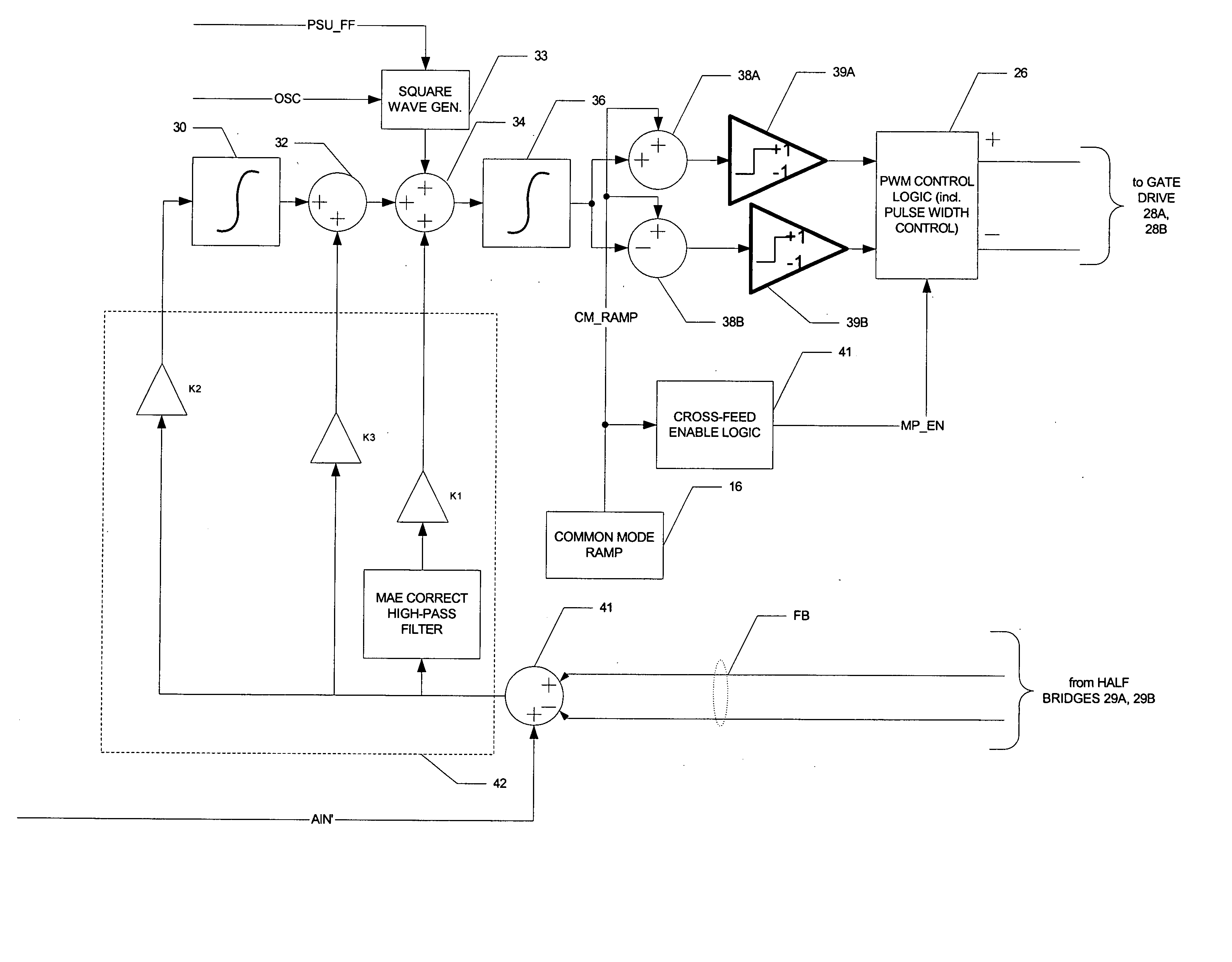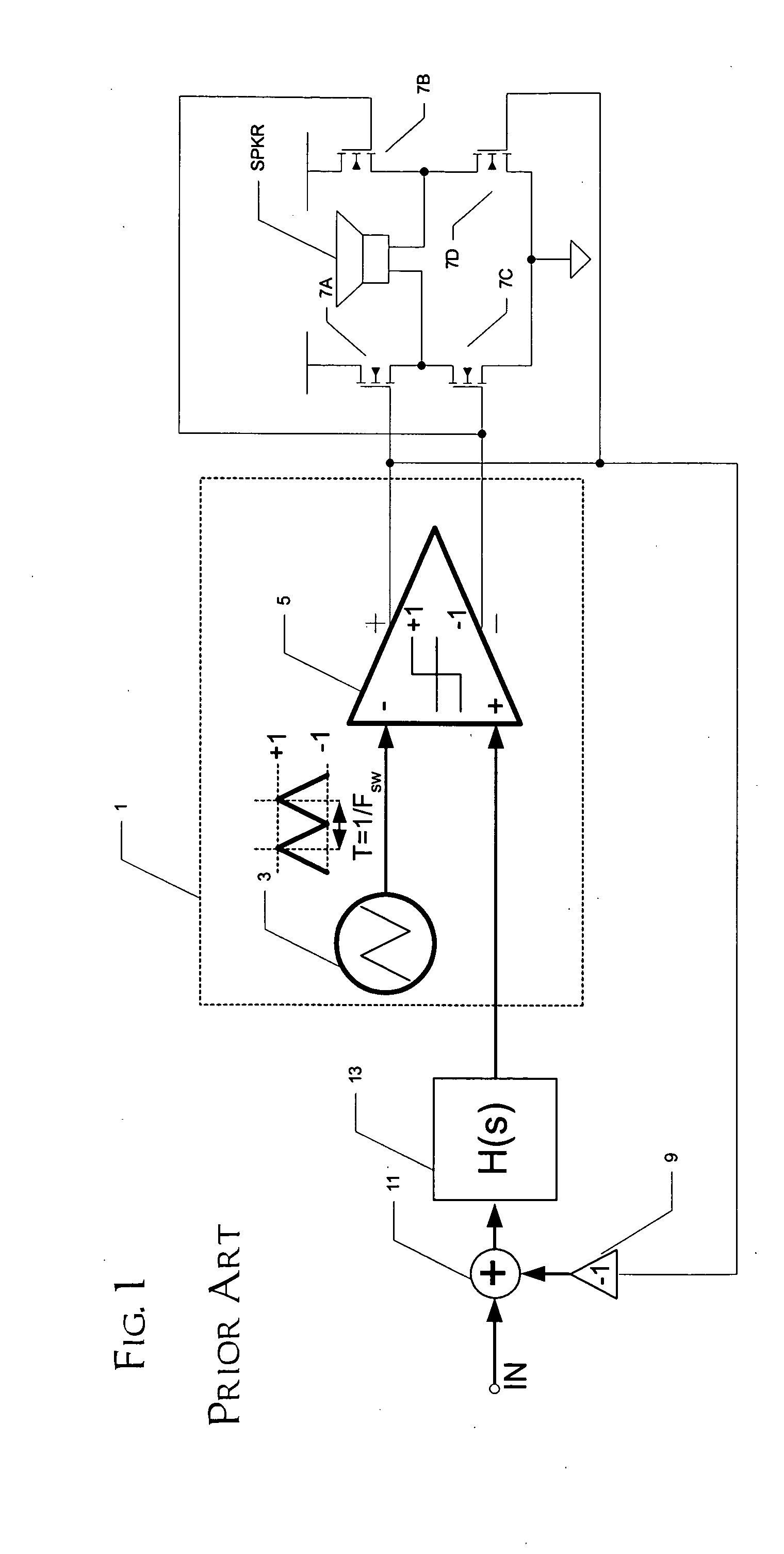Soft transitions between muted and unmuted states in class D audio amplifiers
a technology of audio amplifiers and soft transitions, applied in the field of audio amplifiers, can solve the problems of undesirable audible clicks and pops, the theoretical efficiency of ab amplifiers, and the presentation of class d audio amplifiers, so as to reduce the energy that appears in audible frequencies and reduce the noise of the audible sideband
- Summary
- Abstract
- Description
- Claims
- Application Information
AI Technical Summary
Benefits of technology
Problems solved by technology
Method used
Image
Examples
Embodiment Construction
[0033] The present invention will be described in connection with its preferred embodiment, namely as implemented into an audio system, such as an automobile sound system, as it is contemplated that this invention is especially beneficial in such an application. However, it is also contemplated that this invention will be beneficial in many other applications in which class D amplifiers, or pulse-width-modulators, are applicable. Accordingly, it is to be understood that the following description is provided by way of example only, and is not intended to limit the true scope of this invention as claimed.
[0034]FIG. 2 illustrates the construction of digital audio amplifier system 10 constructed according to the preferred embodiment of the invention. In this example, system 10 is capable of driving four output audio channels from four separate analog inputs. It is, of course, contemplated that system 10 may drive more or fewer channels, depending upon the system requirements and specif...
PUM
 Login to View More
Login to View More Abstract
Description
Claims
Application Information
 Login to View More
Login to View More - R&D
- Intellectual Property
- Life Sciences
- Materials
- Tech Scout
- Unparalleled Data Quality
- Higher Quality Content
- 60% Fewer Hallucinations
Browse by: Latest US Patents, China's latest patents, Technical Efficacy Thesaurus, Application Domain, Technology Topic, Popular Technical Reports.
© 2025 PatSnap. All rights reserved.Legal|Privacy policy|Modern Slavery Act Transparency Statement|Sitemap|About US| Contact US: help@patsnap.com



